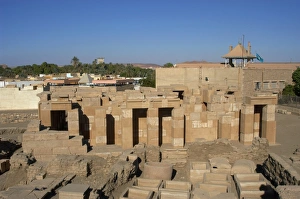Sati Collection
"Sati: A Controversial Hindu Custom of Widow Sacrifice" Sati, a deeply rooted Hindu custom, was once practiced in ancient India
All Professionally Made to Order for Quick Shipping
"Sati: A Controversial Hindu Custom of Widow Sacrifice" Sati, a deeply rooted Hindu custom, was once practiced in ancient India. This tradition involved the self-immolation or burial alive of widows alongside their deceased husbands. The origins of this practice can be traced back to Satet Temple on Elephantine Island in Egypt. Engravings from "Around the World in Eighty Days" depict a Gentoo woman partaking in Sati, showcasing its prevalence across different cultures. However, it was an Indian widow who became synonymous with this ritualistic act as she willingly burned to death with her husband's body. Intriguingly captured by an unknown artist around 1865-75, Shiva is portrayed carrying the corpse of Sati. This image highlights the religious significance associated with Sati and its connection to deities like Shiva. The suppression of this controversial custom is evident through historical records such as "Preparations for a Suttee" (1908) and "The favourite wife of Afzul Khan preparing for suttee" (1847). These depictions shed light on how society gradually began condemning this practice due to ethical concerns. Notably, Bernard Picart's artwork from 1728 showcases a widow burning alongside her late husband's funeral pyre. Similarly, another piece from 1815 portrays the widow of a Brahmin committing suttee during her husband's cremation ceremony. These images reveal that sati took various forms throughout history – from being burned alive to being buried alive beside their husbands' graves. Both practices were eventually deemed illegal due to their brutal nature and violation of human rights. Today, we remember sati as an archaic tradition that has been abolished entirely. It serves as a reminder that cultural practices evolve over time and are subject to scrutiny when they clash with basic principles of humanity and equality.









